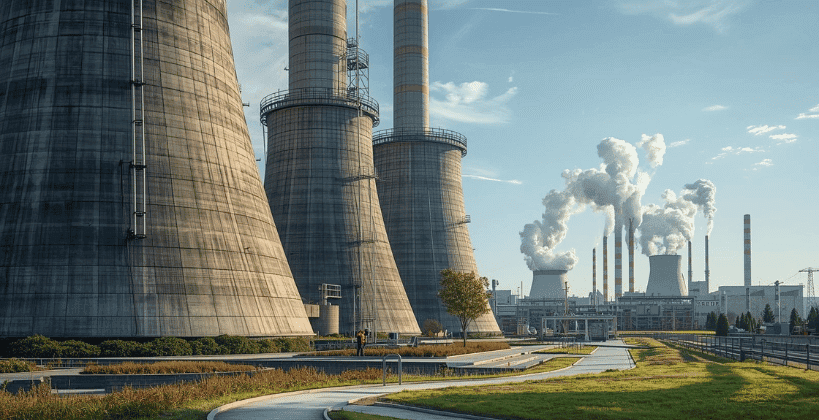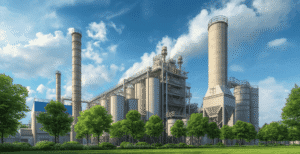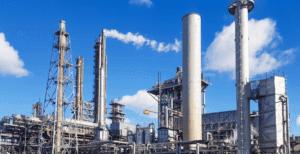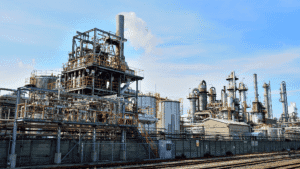Imagine standing near a bustling industrial zone where power plants, cement factories, and steel mills run at full capacity. The hum of progress fills the air — but so does something else: fine particles, toxic gases, and pollutants that silently affect both people and the planet. These emissions are not just invisible byproducts; they are linked to rising respiratory diseases, degraded ecosystems, and climate challenges that stretch far beyond the factory gates.
Industrial air pollution is not only an environmental concern; it is a business, compliance, and health issue. The World Health Organization estimates that air pollution causes 7 million premature deaths globally each year, with industries contributing a significant share of particulate matter, sulfur dioxide, nitrogen oxides, and volatile organic compounds. For businesses, the consequences are clear: non-compliance can lead to legal penalties, production downtime, and reputational damage, while unchecked emissions strain employee health and community relations.
Across the globe, industries are facing heightened scrutiny, stricter regulations, and mounting social pressure to operate responsibly. Investors and customers alike now demand transparency in sustainability practices. In this environment, adopting effective air pollution control solutions is no longer optional — it is critical for survival, growth, and long-term sustainability.
Why Industrial Air Pollution Demands Urgent Attention
1. The Scale of the Issue
Air pollution is a leading global health risk. In India alone, widespread adoption of modern emission-control systems across coal plants could have prevented 720,000 premature deaths over a decade. Yet, fewer than 5% of plants had installed these systems by 2024. Without intervention, industries risk becoming both regulatory targets and public health threats.
2. Regulatory Risks and Compliance Costs
Governments are tightening emission norms. For example, Maharashtra exempted nearly 20,000 MW of coal capacity from installing flue-gas desulfurization (FGD) units. But this decision left 31 cities exceeding PM10 standards and 17 cities exceeding PM2.5 limits in early 2025. The lesson is clear: exemptions may ease short-term costs but lead to long-term environmental and reputational damage.
3. Hidden Sources of Pollution
Diesel generator (DG) sets are a silent contributor. In 2022, Haryana’s DG sets emitted over 1,121 tonnes of PM2.5, with medium-to-large units responsible for 74% of the emissions. With more than 1.47 million DG sets nationwide, unregulated use poses a significant challenge for urban air quality.
4. The Financial Equation
Installing modern pollution control systems across Indian coal plants would cost between $19.5 billion and $32.8 billion annually. But the benefits — in avoided deaths, reduced healthcare costs, and environmental savings — range from $18 billion to $604 billion. In other words, effective air pollution control is not just a moral responsibility — it’s an economic opportunity.

Modern Industrial Air Pollution Control Systems
1. Flue-Gas Desulfurization (FGD) and Scrubbers
FGD systems, especially wet scrubbers, can remove up to 90% of sulfur dioxide (SO₂) from flue gases. While installation costs vary from $200–$500 per ton for large plants, the return on investment in compliance, health, and sustainability is undeniable.
2. Electrostatic Precipitators (ESPs) and Fabric Filters
Used extensively in power, cement, and steel industries, ESPs capture fine particulate matter with high efficiency. Fabric filters (baghouses) complement this by trapping dust and other emissions. Together, they significantly reduce airborne particulate load, ensuring regulatory compliance.
3. Selective Catalytic Reduction (SCR) Systems
SCR is a proven technology for cutting nitrogen oxide (NOx) emissions. In industries with combustion-intensive processes, SCR can achieve reductions of 70–90%, making it a go-to choice for cleaner operations.
4. Biofilters for VOC Control
For sectors like food processing, paints, and chemicals, biofilters provide a natural solution. By leveraging microorganisms to degrade volatile organic compounds (VOCs), these systems achieve up to 98% removal efficiency, with lower energy consumption compared to incinerators.
5. Smart Monitoring and CEMS
Continuous Emissions Monitoring Systems (CEMS) are now mandatory in thousands of industries across India. They enable real-time tracking, predictive maintenance, and transparency. While challenges in calibration and data reliability remain, states like Madhya Pradesh have shown how effective monitoring improves compliance outcomes.
6. Market Mechanisms and Incentives
Emission trading schemes (ETS) offer industries financial incentives to reduce pollution. Surat’s pilot ETS program led to a 29% reduction in particulate emissions, proving how market-driven approaches can accelerate adoption of clean technologies.
7. Next-Gen Smart Systems
Advanced IoT-enabled filtration systems are redefining performance standards. They offer 94% capture efficiency for metal fumes, 25–45% energy savings, and a 20–35% lower total cost of ownership despite higher initial investment. AI-driven predictive models further enhance operational reliability and regulatory compliance.

Implementation Tips for Industries
Conduct a Detailed Emissions Audit
Quantify key pollutants (SO₂, NOx, PM, VOCs).
Prioritize systems that address your highest emission risks.
Choose Industry-Specific Technologies
- Cement/steel → ESPs + baghouses.
- Power plants → FGD + SCR.
- VOC-heavy industries → Biofilters or thermal oxidizers.
Plan for Smart Investments
- Though advanced systems cost 15–25% more upfront, they reduce operating costs over time.
- Future-proof solutions to meet upcoming regulations.
Integrate Monitoring Systems
- Deploy CEMS and connect to regulatory dashboards.
- Standardize calibration for reliable compliance reporting.
Overcome Adoption Barriers
- Financial: Highlight ROI in terms of avoided healthcare costs and penalties.
- Technical: Invest in staff training and low-maintenance designs.
- Policy: Explore ETS credits and subsidies for technology upgrades.
Қорытынды
Industrial air pollution is a multifaceted problem — costing lives, money, and reputation. Left unaddressed, it erodes community trust, invites regulatory action, and drives up operational costs. But with today’s advanced solutions, industries have the opportunity to turn this challenge into an advantage. By integrating modern filtration and emission control systems, companies can significantly reduce harmful emissions, improve energy efficiency, and ensure compliance — all while securing long-term profitability.
Cleaner operations aren’t just about meeting the minimum regulatory thresholds. They are about building resilience, creating a competitive edge in global markets, protecting workers from hazardous exposure, and contributing to a healthier, more sustainable future. Businesses that lead in air pollution control today position themselves as industry frontrunners in sustainability tomorrow.
At Intensiv Filter Himenviro, we specialize in designing and delivering state-of-the-art industrial air pollution control solutions — from electrostatic precipitators and baghouse filters to hybrid systems and smart monitoring technologies. With decades of expertise across power, cement, metal, chemical, and other industries, our solutions are engineered to balance compliance, performance, and cost efficiency.
Ready to take the next step?
Evaluate your emissions profile, consult with our experts, and explore modern air pollution control solutions tailored to your industry needs. The future of clean industry doesn’t wait — and with Intensiv Filter Himenviro, you can start building it today.
Біздің шешімдер ауқымын ашыңыз:
Жиі қойылатын сұрақтар
Industrial air pollution control solutions are systems and technologies designed to reduce or eliminate harmful pollutants released during manufacturing and energy production processes. These include electrostatic precipitators (ESPs), baghouse filters, flue-gas desulfurization units (FGDs), selective catalytic reduction (SCR), biofilters, and smart monitoring systems that target specific pollutants like particulate matter, SO₂, NOx, VOCs, and heavy metals.
Investing in air pollution control is essential for:
Compliance with stricter global and national regulations.
Cost savings, as modern systems reduce downtime and improve energy efficiency (often by 25–45%).
Health protection, lowering worker exposure to hazardous emissions.
- Reputation and sustainability, by customers and investors increasingly demand environmentally responsible practices.
- Электростатикалық сүзгілер (ESP): Capture fine particles using electrostatic forces.
- Fabric Filters (Baghouses): Trap dust and particulate matter through filtration media.
- Flue-Gas Desulfurization (FGD): Removes sulfur dioxide from exhaust gases.
- Selective Catalytic Reduction (SCR): Reduces nitrogen oxides using catalysts.
- Biofilters: Use microorganisms to degrade VOCs and odors.
- Continuous Emission Monitoring Systems (CEMS): Provide real-time tracking and compliance reporting.







